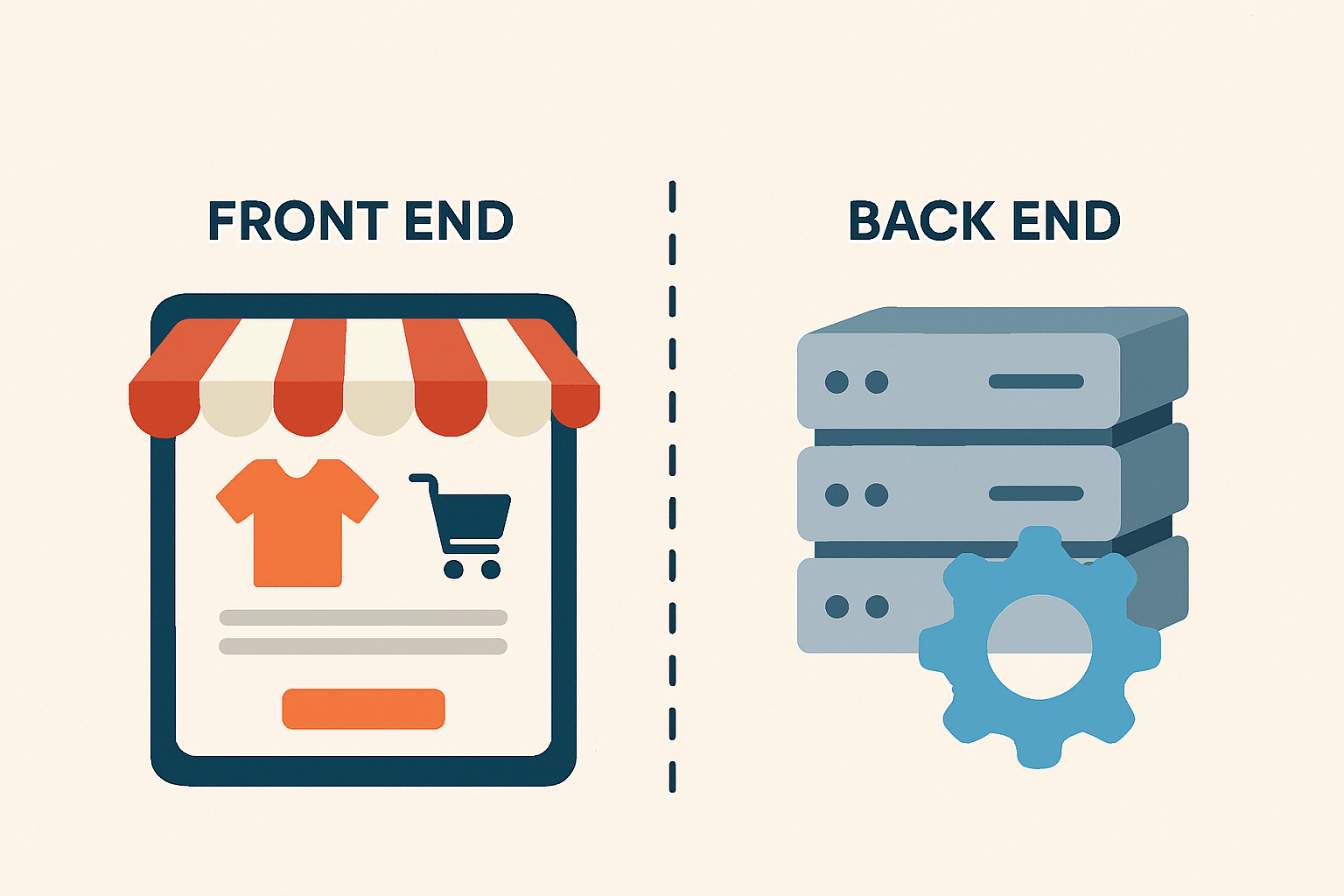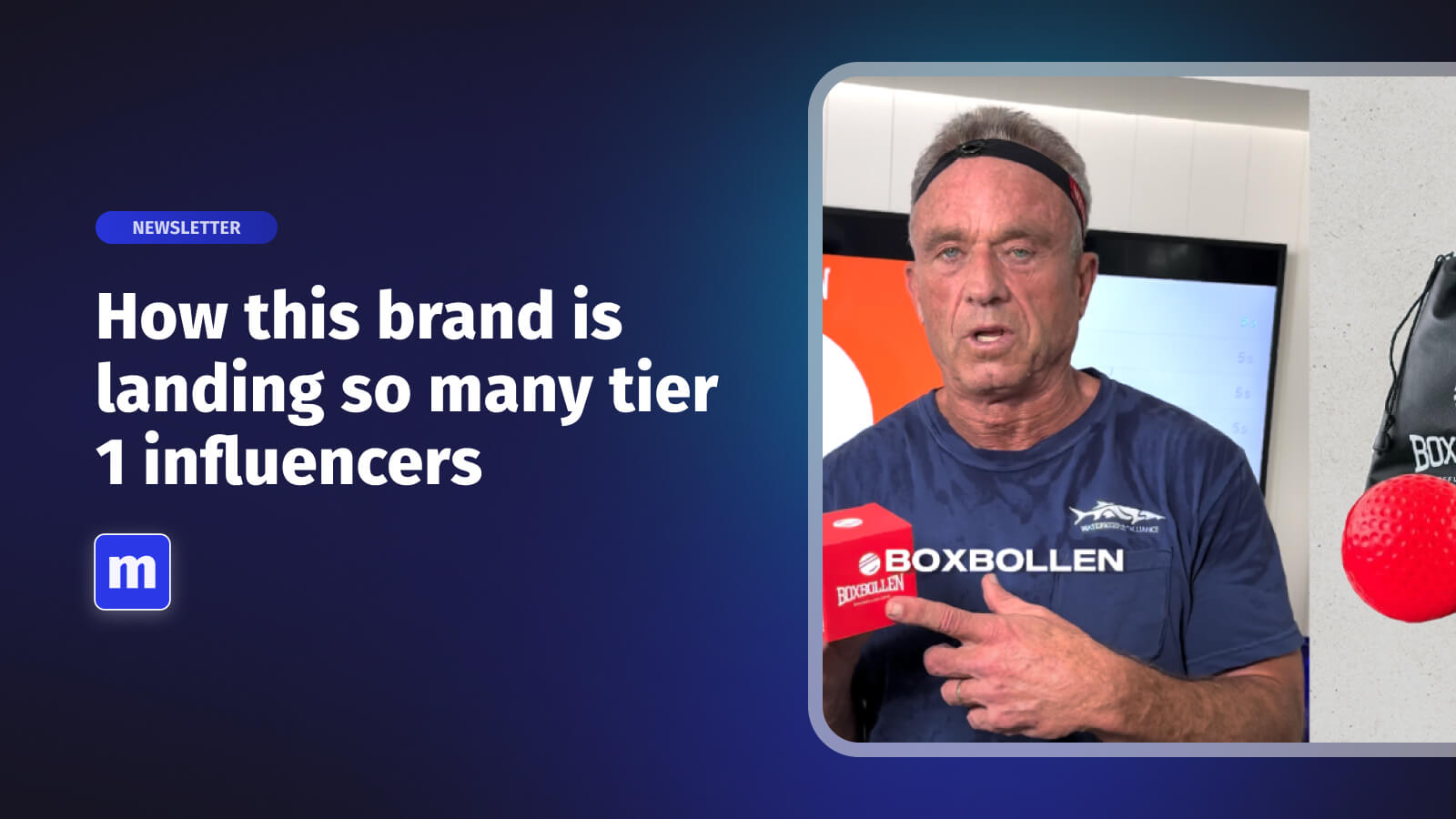
Table of Contents:
- Introduction
- What is Headless Commerce?
- 1. Insufficient Planning and Goal Setting
- 2. Choosing the Wrong Technology Stack
- 3. Inadequate Security Measures
- 4. Complexities and Challenges in API Integration
- 5. Overlooking Performance Optimization for Front-End and Back-End
- 6. Frequently Encountered Front-End Development Issues
- 7. Attempting an All-or-Nothing Transition Instead of a Phased Approach
- 8. Underestimating Technical Expertise
- 9. Data Management and Synchronization Challenges Across Multiple Systems
- 10. Lack of a Clear Vendor Selection Strategy
- 11. Increased Development and Maintenance Costs
- 12. No Real-Time Preview
- 13. Integration Challenges with Marketing and Business Functions
- 14. Inadequate Testing and Monitoring
- How Can I Ensure My Team Has the Necessary Technical Expertise for Headless Commerce
- Smart Moves for a Smooth Headless Commerce Implementation
- Navigating Headless with Confidence
This article was written by Naturaily Agency
You're diving into the world of headless commerce? Smart move. Offering that sweet, flexible, customer-first experience? Absolutely. But, let's be real, it's not all sunshine and API calls. With years navigating the e-commerce landscape, we've seen businesses stumble, sometimes spectacularly, on the path to headless success.
The move towards headless commerce is gaining significant traction, with experts predicting a 22% increase in its use each year. Online stores are switching to headless commerce for more control over what customers see and how they experience the website.
What is Headless Commerce?
Headless commerce is an e-commerce architecture that separates the customer-facing front end of a digital store from the operational back-end technology. This decoupling allows businesses to independently manage the content presentation layer (front end) and the business logic and functional layer (back end).
This separation gives the freedom to tailor each component of the e-commerce platform based on strategic priorities. The architecture is termed “headless” because the “head” (front end) operates independently of the “body” (back end). This shift enables independent scaling and development of both the front-end and back-end systems.

Unlike traditional e-commerce systems, where these layers are tightly coupled, headless commerce allows for changes and updates to the front end without interfering with the back-end operations and vice versa, leading to greater agility.
Integrating multiple systems, managing APIs, ensuring a seamless customer journey – it's a lot. And mistakes happen. Let's break down the common pitfalls and how to avoid them.
1. Insufficient Planning and Goal Setting
First up, let's talk about planning. You wouldn't build a house without blueprints, right? Same goes for headless commerce. Diving in without a clear strategy? That's a recipe for chaos.
Headless should be seen as a strategic tool to achieve specific outcomes like improved conversion, better customer experience, or faster feature deployment, not just a fashionable technology. Without defined objectives, businesses risk failing to realize the intended benefits or investing in unnecessary complexity.
Before implementing headless commerce, e-commerce businesses must clearly define how this architectural change will directly support their key business objectives. This strategic alignment ensures that the investment delivers tangible value and avoids the pitfalls of adopting technology for its own sake.
Start with a roadmap. Define your goals, set milestones, and stick to your plan.
2. Choosing the Wrong Technology Stack
Next, the tech. You're building a digital system, and compatibility is key. Don't choose the wrong technology stack – it will cause integration issues, poor performance, and a subpar platform. Instead, thoroughly evaluate your business needs and select a technology stack that supports them.
Businesses sometimes prioritize trendy technologies over practical suitability for their specific needs and their team's expertise. Technology choices should be driven by concrete business requirements, not just hype. Choosing technologies your team doesn't know well can cause projects to take longer, cost more, and result in a worse final product.
Consider factors like API compatibility, performance, and long-term maintenance. For 32% of senior leaders integration challenges are a significant barrier to their organizations' success. Don't become a statistic. Choose wisely.
3. Inadequate Security Measures

The decoupled nature of headless commerce inherently increases security risks due to the interconnectedness of multiple systems and APIs. Each API endpoint and integrated service presents a potential vulnerability, demanding robust security measures across the entire architecture. A critical oversight is often inadequate API security, creating significant risks in data exchange.
Given that APIs form the communication backbone, they must be strongly protected. This includes implementing robust authentication to verify client identities and strict authorization protocols to limit access to permitted resources. Weak API security can lead to the exposure of sensitive customer data, including personal and financial information, and severely compromise business operations.
Think about it. Each API, each integration, is a potential entry point for cyber threats. In 2024, data breaches cost companies an average of $4.45 million. Invest in robust measures, stay updated on best practices, and prioritize customer trust.
4. Complexities and Challenges in API Integration
Headless commerce demands a significant shift in your e-commerce architecture, not a simple switch. A major technical hurdle is the complexity of API integration. Headless architecture requires connecting numerous independent systems through APIs, creating intricate coordination challenges.
Businesses often underestimate the significant time and effort needed for proper integration and seamless communication between these services. This underestimation can result in rushed or incorrect implementations, leading to inefficiencies and slow performance due to overlooked API nuances and necessary customizations for smooth data flow.
To avoid this, plan for the long haul. Headless commerce requires a strategic, structured approach and, often, experienced partners. Invest in experienced integration specialists and thoroughly test all API connections and data flows. Utilizing API management tools and adopting a phased implementation approach can also significantly mitigate these challenges.
5. Overlooking Performance Optimization for Front-End and Back-End
A direct and obvious downside of a poorly executed headless commerce setup is a slower website and reduced performance. If the front-end code isn't well-optimized, API calls are inefficient, or a CDN isn't used effectively, users will face frustratingly slow loading times. Slow websites drive away shoppers, leading to higher bounce rates, lower sales, and SEO issues, as performance is key to user satisfaction and business results.
Similarly, inefficient API calls and poor data fetching create back-end bottlenecks, hindering application responsiveness. Users expect quick interactions, and delays negatively impact brand perception.
6. Frequently Encountered Front-End Development Issues
Headless commerce, despite its front-end flexibility, often leads to common pitfalls. A frequent mistake is the inefficient allocation of time and resources for building custom front-ends. Businesses sometimes overlook the advantages of leveraging existing front-end libraries or front-end as a service (FaaS) solutions that offer ready-to-use components.
The desire for a completely unique and highly tailored user interface can overshadow the efficiency and faster launch times provided by pre-built options. Businesses should carefully evaluate the balance between complete originality and the practical benefits of utilizing readily available resources to avoid unnecessary development overhead.
7. Attempting an All-or-Nothing Transition Instead of a Phased Approach
Going all-in on headless commerce at once can be a pretty big strategic gamble. Trying to swap out everything – front-end and back-end – in one go often makes things super complicated, bumps up the risks big time, and can even lead to the whole project not working out. It's a lot to handle all at once, and you're bound to run into unexpected snags.
A smarter way to go about it is to take things step by step. Maybe start by just changing how the website looks and feels (the front end) while keeping the behind-the-scenes stuff (the back end) the same for now. This lets you test things out bit by bit, get feedback from users as you go, and makes the whole switch way less risky. Breaking it down into smaller chunks helps you learn and adjust, making the move to headless a much smoother ride.
8. Underestimating Technical Expertise
Successfully setting up and running a headless commerce system depends a lot on having the right people with the right skills. A common mistake is not having enough developers who know modern website-building tools like React or Vue.js, and who really understand how to connect different systems with APIs in a headless setup.
Without these experts, you can end up with mistakes, delays, and even security problems. Sometimes, businesses also don't realize they might need to hire new people, like API specialists, to manage how all the different parts of the system talk to each other.
It's also important to remember that switching to headless commerce can really change how marketing teams work. They might need to learn new ways of managing website content and running campaigns. If you don't give them the right training and support, it can slow them down and make it harder to use the new system effectively. So, making sure you have both the tech experts and well-trained marketing folks is key for a smooth and successful move to headless commerce.
9. Data Management and Synchronization Challenges Across Multiple Systems

A major technical hurdle is keeping data consistent between the separate front-end and back-end of a headless system. It's crucial to ensure important information like product details, stock levels, customer info, and order history stays accurate across both sides. If this data isn't in sync, it can lead to mistakes in what customers see, selling items that aren't there, wrong customer details, and ultimately, unhappy customers and problems with how things run.
Connecting important data systems, especially Product Information Management (PIM) tools, to the headless setup is also really crucial but often tricky. A PIM system keeps all your product info in one place, so getting it to talk smoothly to your online store is key for showing customers the right and up-to-date details. This needs careful planning and doing.
10. Lack of a Clear Vendor Selection Strategy
Headless commerce typically involves multiple vendors for APIs, front-end, CMS, search, payments, etc. This diverse ecosystem can complicate management due to vendor dependencies. A strong tech plan is key for coordinating these relationships effectively, requiring clear communication, coordination, and accountability.
Choosing vendors without a thorough needs assessment and clear criteria can lead to mismatches between their offerings and your specific business requirements and objectives.
When the partners you choose don't align well with what you need, it can lead to major difficulties in getting everything to work together. This will likely make your headless setup less effective overall. Because of this, it's essential to have a thorough process for checking how well potential partners meet your specific needs and how easily they can connect with your other systems.
11. Increased Development and Maintenance Costs
It often costs more than businesses expect to build the custom website part and connect all the different online tools in headless commerce. If they don't plan for this money early on, they might run out of funds or have to cut corners.
Looking at ready-made website parts can help keep these initial costs in check. Just remember that headless commerce, because it lets you customize and connect so many things, will be a significant money commitment from the start.
While headless commerce's flexibility is great, it can bring hidden costs from integrations and third-party services. Unlike simpler websites where everything is in one place, headless often means paying for different online services, API usage fees, and needing experts to manage all the connections. If you don't budget for these regular costs, it can cause money problems later on.
Also, while many integrations are ready-made, custom ones for your specific needs can be costly to build and maintain. So, carefully check your integration needs and the pricing of all necessary third-party services early on to avoid unexpected costs later.
So, it's really important to figure out all the costs upfront – both for building the website and for keeping it running – to make sure your headless plan works out financially. You need to be ready to spend money not just on building it, but also on keeping it going and improving it over time.
12. No Real-Time Preview
Moving from traditional to headless commerce brings significant architectural changes, notably in content previewing. While traditional platforms offer a built-in real-time view, headless systems do not, potentially complicating content management and the creation process.
This lack of immediate visual feedback can make it difficult for content managers to guarantee the final presentation aligns with their intent, potentially leading to errors and a less optimal customer journey.
To address this, make sure you're actively using preview features or setting up clear, visual workflows – it makes a big difference. The key takeaway is that putting a strong preview system into your routine is a great chance to simplify how you make content, lower the number of errors, and ultimately improve the quality and effectiveness of your online presence.
13. Integration Challenges with Marketing and Business Functions
Headless commerce offers a lot of flexibility, but it also means you need to manually connect all your business tools, which can take a while. Getting it to work well with your current marketing tools, like email and CRM, needs careful planning and can be a real challenge.
Traditional systems often have built-in connections, but with headless, you have to connect every separate system yourself – things like customer management, inventory, payments, and marketing. This gives you much control but can also make the setup process longer and more complicated.
Seeing how well your marketing is working in headless commerce is tricky because you need to follow customers and their purchases across all the different parts of your website. Because the website's look and the behind-the-scenes parts are separate in headless commerce, you need to carefully think about how you gather and report data from each to see the whole picture of how things are working.
Setting up these tools to correctly track what users do and important sales numbers across the whole headless system can be much harder than with regular, all-in-one websites.
To really understand how customers interact with you and give them personalized experiences, you need all their data in one easy-to-reach place. Combining data from these different sources often takes special tools and experts to make sure it's accurate and gives you useful insights to make smart decisions.
14. Inadequate Testing and Monitoring
While the composable nature of headless commerce allows for rapid innovation and frequent updates, neglecting thorough testing can expose you to significant regression risks. Each update to an individual component has the potential to negatively impact other seemingly unrelated parts of your system.
To avoid costly disruptions and ensure a consistent user experience, prioritize the automation of your testing processes. This will not only save valuable development time in the long run but, more importantly, prevent potentially expensive errors and maintain the integrity of your customer-facing platform.
How Can I Ensure My Team Has the Necessary Technical Expertise for Headless Commerce
To make headless commerce work well, you need a team with the right tech smarts.
First, honestly assess your current team's technical capabilities. Take a close look at their proficiency in modern front-end frameworks like React, Next.js, or Vue.js, their experience with back-end technologies such as Node.js, and their understanding of API integrations. This evaluation will clearly highlight any gaps in expertise that need to be addressed.
Next, help your team get better and invest in targeted training and development. Explore training programs, specialized workshops, and comprehensive online courses that delve into the specific technologies underpinning headless commerce, whether you're working with platforms like Shopify. Focus on enhancing their skills in areas critical to headless, such as microservices architecture, serverless computing, and effective API management.
For more complex integrations or to inject experienced knowledge into your team, consider strategically hiring developers with a solid background in headless commerce and a proven track record of integrating diverse systems and platforms.
Also, think about teaming up with outside experts. Consultants or e-commerce agencies that really know headless commerce can be a huge help, especially when you're dealing with tricky connections and trying to get the most out of your setup.
To help your team work better and be more flexible, try using methods like Scrum or Kanban for managing projects. These help you build things step by step and get feedback along the way, making it easier to handle the complexities of headless commerce. Since what your customers see is so important, make sure your team is great at building those smooth and high-converting websites.
Lastly, keep the culture of thorough code documentation and regular refactoring. This makes it easier for everyone to understand and keep the headless system running well over time.
Smart Moves for a Smooth Headless Commerce Implementation
While headless commerce has the power to really boost growth and create amazing customer experiences, actually making that happen takes careful planning and knowing what you're doing.
1. Develop a Comprehensive Plan and Strategy
Before touching any code, define your objectives. What specific outcomes do you expect from your headless implementation?
- Clearly articulate your goals: What do you want to achieve (e.g., improved site speed, design flexibility, omnichannel presence)?
- Establish measurable KPIs: How will you track the success of your headless implementation?
2. Select Your Technology Stack
Your technology choices are critical for a scalable and maintainable headless architecture.
- Align with business needs: Ensure the technology directly addresses your specific challenges and supports your strategic goals.
- Consider future scalability: Will the chosen solutions adapt to your anticipated growth and evolving requirements?
- Evaluate team expertise: Does your development team have the necessary skills, or will upskilling or external hiring be required?
3. Embrace a Phased Implementation Approach
Minimize risk and maximize learning by rolling out headless in stages.
- Start with high-impact areas: Focus on key customer touchpoints like product detail pages or the checkout process.
- Iterate based on feedback: Use user data and performance results to refine your architecture before wider adoption.
4. Choose Your Partners Carefully
The headless ecosystem involves multiple vendors. Thorough due diligence is essential.
- Assess integration capabilities: How well do potential vendors' solutions integrate with your existing and planned systems?
- Evaluate reputation and reliability: What is their track record, and do they have a history of dependable service? Look at their website for examples of their work or read reviews on sites like Clutch to see what previous clients say about their projects.
- Consider the level of support: What kind of documentation, training, and ongoing support do they offer?
- Analyze pricing structures: Do their pricing models align with your budget and long-term cost projections?
Navigating Headless with Confidence
Headless commerce gives your customers the experience they crave, the flexibility your business needs, and the scalability you dream of. But, like any powerful tool, it comes with its challenges.
So remember that this isn't just about technology. It's about strategy, expertise and a customer-centric mindset, and building a digital experience that resonates, converts, and scales. Don't let these mistakes hold you back. Learn from them, adapt, and thrive.
Related content
Turn your social content into a revenue channel
Turn your TikToks and Reels into shoppable videos and boost conversions by 3.5x.













